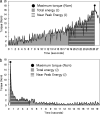In vitro and in vivo mechanical stability of orthodontic mini-implants
- PMID: 22011094
- PMCID: PMC8845555
- DOI: 10.2319/071311-447.1
In vitro and in vivo mechanical stability of orthodontic mini-implants
Abstract
Objective: To compare in vivo and in vitro mechanical stability of orthodontic mini-implants (OMIs) treated with a sandblasted, large-grit, and anodic-oxidation (SLAO) method vs those treated with a sandblasted, large-grit, and acid-etching (SLA) method.
Materials and methods: Fifty-four titanium OMIs (cylindrical shape, drill-free type; diameter = 1.45 mm, length = 8 mm, Biomaterials Korea Inc, Seoul, Korea) were allocated into control, SLA, and SLAO groups (N = 12 for in vivo and N = 6 for in vitro studies per group). In vitro study was carried out on a polyurethane foam bone block (Sawbones, Pacific Research Laboratories Inc, Vashon, Wash). In vivo study was performed in the tibias of Beagles (6 males, age = 1 year, weight = 10 to 13 kg; OMIs were removed at 8 weeks after installation). For insertion and removal of OMIs, the speed and maximum torque of the surgical engine were set to 30 rpm and 40 Ncm, respectively. Maximum torque (MT), total energy (TE), and near peak energy (NPE) during the insertion and removal procedures were statistically analyzed.
Results: In the in vitro study, although the control group had a higher insertion MT value than the SLA and SLAO groups (P < .01), no differences in insertion TE and NPE or in any of the removal variables were noted among the three groups. In the in vivo study, the control group exhibited higher values for all insertion variables compared with the SLA and SLAO groups (MT, P < .001; TE, P < .01; NPE, P < .001). Although no difference in removal TE and removal NPE was noted among the three groups, the SLAO group presented with a higher removal MT than the SLA and control groups (P < .001).
Conclusions: SLAO treatment may be an effective tool in reducing insertion damage to surrounding tissue and improving the mechanical stability of OMIs.
Figures




Similar articles
-
Surface Treatment of Dental Mini-Sized Implants and Screws: A Systematic Review with Meta-Analysis.J Funct Biomater. 2024 Mar 10;15(3):68. doi: 10.3390/jfb15030068. J Funct Biomater. 2024. PMID: 38535261 Free PMC article. Review.
-
Effect of surface treatment on the mechanical stability of orthodontic miniscrews.Angle Orthod. 2022 Jan 1;92(1):127-136. doi: 10.2319/020721-111.1. Angle Orthod. 2022. PMID: 34338745 Free PMC article.
-
Effects of acid etching and calcium chloride immersion on removal torque and bone-cutting ability of orthodontic mini-implants.Am J Orthod Dentofacial Orthop. 2018 Jul;154(1):108-114. doi: 10.1016/j.ajodo.2017.10.032. Am J Orthod Dentofacial Orthop. 2018. PMID: 29957307
-
Angled-predrilling depth and mini-implant shape effects on the mechanical properties of self-drilling orthodontic mini-implants during the angled insertion procedure.Angle Orthod. 2012 Sep;82(5):881-8. doi: 10.2319/100711-629.1. Epub 2012 Mar 3. Angle Orthod. 2012. PMID: 22390676 Free PMC article.
-
Effects of wobbling angle on the stability measures of orthodontic mini-implants during insertion and removal procedures.Angle Orthod. 2013 Nov;83(6):1009-14. doi: 10.2319/021513-134.1. Epub 2013 May 10. Angle Orthod. 2013. PMID: 23663168 Free PMC article.
Cited by
-
Biological Effects of Anodic Oxidation on Titanium Miniscrews: An In Vitro Study on Human Cells.Dent J (Basel). 2019 Nov 17;7(4):107. doi: 10.3390/dj7040107. Dent J (Basel). 2019. PMID: 31744265 Free PMC article.
-
Primary stability of self-drilling and self-tapping mini-implant in tibia of diabetes-induced rabbits.Int J Dent. 2014;2014:429359. doi: 10.1155/2014/429359. Epub 2014 May 11. Int J Dent. 2014. PMID: 24949013 Free PMC article.
-
Crystalline Biomimetic Calcium Phosphate Coating on Mini-Pin Implants to Accelerate Osseointegration and Extend Drug Release Duration for an Orthodontic Application.Nanomaterials (Basel). 2022 Jul 16;12(14):2439. doi: 10.3390/nano12142439. Nanomaterials (Basel). 2022. PMID: 35889663 Free PMC article.
-
Surface Treatment of Dental Mini-Sized Implants and Screws: A Systematic Review with Meta-Analysis.J Funct Biomater. 2024 Mar 10;15(3):68. doi: 10.3390/jfb15030068. J Funct Biomater. 2024. PMID: 38535261 Free PMC article. Review.
-
Effect of surface treatment on the mechanical stability of orthodontic miniscrews.Angle Orthod. 2022 Jan 1;92(1):127-136. doi: 10.2319/020721-111.1. Angle Orthod. 2022. PMID: 34338745 Free PMC article.
References
-
- Miyawaki S, Koyama I, Inoue M, et al. Factors associated with the stability of titanium screws placed in the posterior region for orthodontic anchorage. Am J Orthod Dentofacial Orthop. 2003;124:373–378. - PubMed
-
- Cheng S. J, Tseng I. Y, Lee J. J, Kok S. H. A prospective study of the risk factors associated with failure of mini-implants used for orthodontic anchorage. Int J Oral Maxillofac Implants. 2004;19:100–106. - PubMed
-
- Chen C. H, Chang C. S, Hsieh C. H, et al. The use of microimplants in orthodontic anchorage. J Oral Maxillofac Surg. 2006;64:1209–1213. - PubMed
-
- Park H. S, Jeong S. H, Kwon O. W. Factors affecting the clinical success of screw implants used as orthodontic anchorage. Am J Orthod Dentofacial Orthop. 2006;130:18–25. - PubMed
-
- Motoyoshi M, Hirabahashi M, Uemura M, Shimizu N. Recommended placement torque tightening an orthodontic mini-implant. Clin Oral Implants Res. 2006;17:109–114. - PubMed
Publication types
MeSH terms
Substances
LinkOut - more resources
Full Text Sources
Miscellaneous

